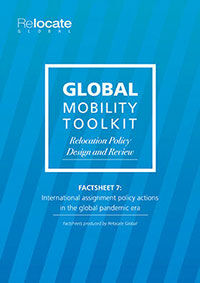Managing employee engagement during the pandemic
Human resource managers have noted the importance of employee engagement in raising organisational performance for many years. During the tough economic times associated with the current pandemic, maintaining and even raising employee engagement takes on increased significance. Dr Sue Shortland explains the concept of engagement and how it can be fostered in the environment of home working.

The HR profession has focussed on engendering employee motivation, commitment and loyalty for many years. Today though HR’s focus goes beyond these concepts, setting out increased employee engagement as the ‘holy grail’ of HR endeavours.There are significant benefits to organisations when they have an engaged workforce. For example, engagement leads to employees ‘going the extra mile’ for their employers, putting in discretionary effort to help to boost organisational performance. Engaged employees are invested in their organisation’s success and work collaboratively with colleagues to achieve a common goal. They also typically display high communication and performance levels. In addition, engaged employees can help to create a friendly, supportive and approachable workplace environment. Excellent working relationships with line and senior management are also usually in evidence where there is high employee engagement.
Watch all of Dr Sue Shortland's most recent webinars:
What is employee engagement?
Employee engagement exceeds motivation, commitment and loyalty. Improving employee motivation concerns employer actions taken to support employees’ desire to reach particular goals. Employee commitment suggests dedication to a task or work-related objective and loyalty highlights organisational allegiance, reflected in low levels of turnover. Employee engagement, however, refers to the positive emotional connection an employee has with their organisation, linked to both an employee’s state of mind and behaviour. Work engagement is thus considered to have three main elements: vigour (encompassing energy, resilience and effort); dedication (including enthusiasm, inspiration and pride); and absorption (being engrossed in one’s work).An employee’s state of engagement will of course vary over time – individuals are unlikely to be fully engaged every working moment. Nonetheless, organisations will wish to maximise engagement as it links to increased productivity and performance. This is because the concept of employee engagement comprises three key dimensions all of which contribute to organisational outcome improvements:- Intellectual engagement – this refers to employees thinking how to do their job better and being absorbed in their work;
- Affective engagement – this refers to employees feeling positive emotional connections in relation to doing a good job;
- Social engagement – this concerns employees making the most of opportunities to discuss work-related improvements with colleagues at work.
What drives employee engagement?
There are a number of antecedents to employee engagement. These include senior management vision and integrity, and good two-way communications between management and employees, where employee voice is listened to and action is taken in response to employee feedback. Engaged line managers who encourage employees to feed their views upwards also play an important part in driving forward employee engagement. In addition, a supportive work environment, a good fit between the employee and their job role, and appropriate job resources to support the employee to do their job well act together to promote a climate that facilitates employee engagement.The characteristics of the job role are also of importance in driving engagement. For example, employee engagement is enhanced when employees are given work that is challenging and varied which enables them to use a number of different skills. Engagement is also supported when employees can display autonomy and personal discretion, and can make a meaningful contribution.Download the Factsheet: Relocation Policy Design and Review: International assignment policy actions in the global pandemic era to find out more about:
- International assignment types – options and trends
- Virtual assignments and remote working
- Cultural competence
- The employee experience, business flexibility and core-flex solutions
- Employee and family support and duty of care
- Compliance issues
- Further reading
A further point concerns the relevance of value congruence – this refers to the extent to which the values and behaviours expected by an organisation align with the behaviours that individuals themselves value as part of their own self-image. Hence, when an employee is expected to behave in a way which is similar to how they see themselves, they are more likely to find their job roles valuable and worthwhile and so are more willing to engage themselves with them. Indeed, the CIPD comments “employees who have good quality jobs and are managed well, will not only be happier, healthier and more fulfilled, but are also more likely to drive productivity, better products or services, and innovation. This mutual gains view of motivation and people management lies at the heart of employee engagement”.
Raising engagement during the pandemic
Employee engagement can, however, have a dark side. If employees become “over-engaged” this can lead to stress and burnout. This can be especially true when employees have a poor work-life balance, being unable to separate out work life from home life. When the spill-over between work and personal life becomes too high, this creates conflict and can damage relationships both at work and within the family.During the pandemic many employees are working from home. As such, there is the potential for a greater level and intensity of work-home life spill-over. To reduce the likely negative effects of poor work-life balance, employers should ensure that employees take their full rest breaks – this is especially important given the increased level of screen time individuals are experiencing as online meetings replace face-to-face interactions. Flexibility should be enacted to ensure that employees are able to balance family needs (such as home schooling where schools have closed) with work demands.It is also important to give consideration to job demands including the urgency of work, workload, and any role conflict or ambiguity within the job as all of these factors play a role in mediating the success of employee engagement. With employees working remotely, interactions with line managers may be less frequent. As such employees might be working with less guidance than usual. While autonomy and discretion do help drive engagement, it is important that line manger guidance continues to be given for successful work outcomes.Appropriate resources must also be provided to support homeworking employees sufficiently in their endeavours. Working from home may require the provision of equipment, specialist computer software and other materials/services to enable the work role to be performed to the best of the employee’s ability. It is important to remember that not all employees’ homes have the necessary space available for a separate office environment – consideration might be given to scheduling online meetings when family members such as children will be in school to enable discussions to take place uninterrupted.As some businesses experience declines in customer interactions and sales, and a consequent loss of financial performance, so there may be a need for reductions in headcount to maintain profitability or even just to keep the business ticking over. In such cases, particularly if employee headcount has to be reduced, the pressure to raise employee productivity among remaining employees may increase in order to attempt to maintain business outcomes. Care must be taken here not to overload employees both in terms of volume of work and with unrealistic deadlines. Job demands must be reasonable if engagement is to be maintained. A further point though concerns the loss of social relationships. Headcount losses can lead to redundancy survivor syndrome in those who have remained in work, with a damaging effect on morale and engagement overall. Effort must be taken to support employees in such circumstances for instance via employee assistance programmes.Engagement is driven by and reflected within good workplace social relationships. The isolation that can be experienced from working alone at home can have a negative impact on employees, leading to loss of sociability and creativity. Efforts to promote team activities and social events – albeit held remotely – can help strengthen work relationships and foster engagement.Regular two-way communications between line managers and employees and with communications also involving senior management as appropriate can also help to drive employee engagement during periods of workplace isolation. Regular initiatives such as feedback mechanisms, employee surveys, etc. can still be run even if employees are physically separated from their usual work space.Engagement also rests on a good fit between the person and the job role; consideration is therefore needed to ensure that necessary training and development continues to take place via remote delivery methods as appropriate. Where possible to operate activities on site, suitably socially distanced, this might also be arranged – although it is important that home-working employees are not forced to attend if they have underlying health issues. Employee engagement initiatives are crucial to business success. Even during periods of lockdown it is possible to adapt and use practices that foster engagement to ensure that this does not suffer when employees are unable to attend the workplace in person. And for those who remain physically in the workplace, employee engagement interventions should continue if organisational performance is to remain as high as possible.Subscribe to Relocate Extra, our monthly newsletter, to get all the latest international assignments and global mobility news.Relocate’s new Global Mobility Toolkit provides free information, practical advice and support for HR, global mobility managers and global teams operating overseas.
 Access hundreds of global services and suppliers in our Online Directory
Access hundreds of global services and suppliers in our Online Directory
©2025 Re:locate magazine, published by Profile Locations, Spray Hill, Hastings Road, Lamberhurst, Kent TN3 8JB. All rights reserved. This publication (or any part thereof) may not be reproduced in any form without the prior written permission of Profile Locations. Profile Locations accepts no liability for the accuracy of the contents or any opinions expressed herein.








































